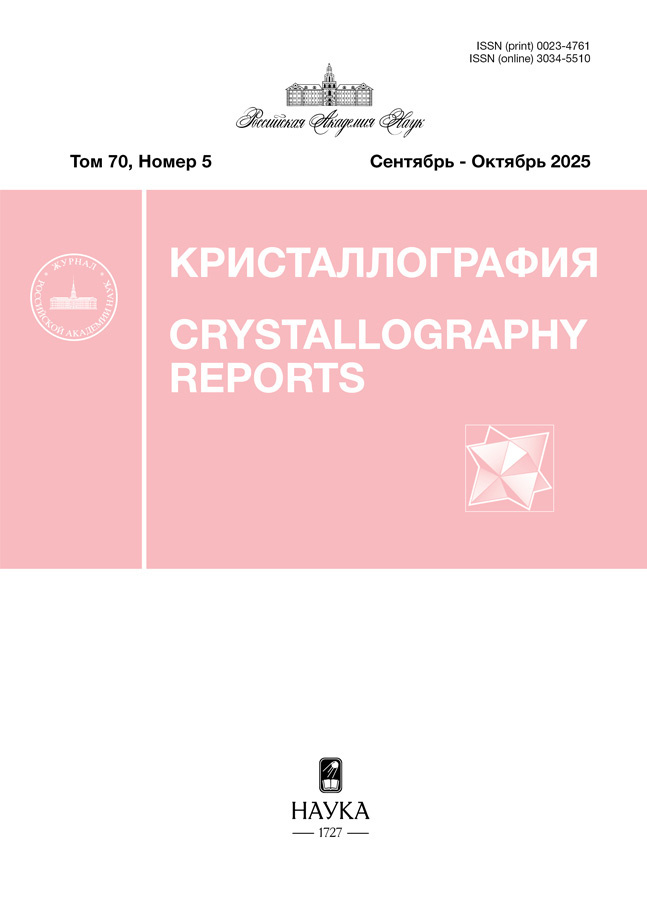Comprehensive studies of sarmatian pendant mirrors
- Authors: Antipenko A.V.1,2, Smekalova T.N.1,3, Kulikov A.V.1,2, Fridrichson S.K.1, Loboda A.Y.3, Guryeva P.V.3, Kovalenko E.S.3, Tereschenko E.Y.3, Yatsishina E.B.3
-
Affiliations:
- Vernadsky Crimean Federal University
- Institute of Crimean Archeology, Russian Academy of Sciences
- National Research Centre “Kurchatov Institute”
- Issue: Vol 69, No 6 (2024)
- Pages: 1056-1061
- Section: КРИСТАЛЛОГРАФИЧЕСКИЕ МЕТОДЫ В ГУМАНИТАРНЫХ НАУКАХ
- URL: https://gynecology.orscience.ru/0023-4761/article/view/673639
- DOI: https://doi.org/10.31857/S0023476124060164
- EDN: https://elibrary.ru/YGCTDA
- ID: 673639
Cite item
Abstract
This study considers the elemental composition and manufacturing technology of mirrors of the so-called Sarmatian type. The examined mirrors are fortuitous discoveries originating from the territory of the Kerch Peninsula. All three objects are pendant mirrors with radial-beam ornamentation, which appeared at the turn of the 1st and 2nd centuries AD and existed until the beginning of the 3rd century AD. The results of X-ray fluorescence analysis of the alloy composition indicate that the mirrors are made of an alloy of copper, tin and lead with similar qualitative characteristics. The method of X-ray tomography clarified the details of the relief ornamentation, which was poorly expressed on the items due to corrosion.
Full Text
About the authors
A. V. Antipenko
Vernadsky Crimean Federal University; Institute of Crimean Archeology, Russian Academy of Sciences
Author for correspondence.
Email: an.antipenko@yandex.ru
Russian Federation, Simferopol; Simferopol
T. N. Smekalova
Vernadsky Crimean Federal University; National Research Centre “Kurchatov Institute”
Email: an.antipenko@yandex.ru
Russian Federation, Simferopol; Moscow
A. V. Kulikov
Vernadsky Crimean Federal University; Institute of Crimean Archeology, Russian Academy of Sciences
Email: an.antipenko@yandex.ru
Russian Federation, Simferopol; Simferopol
S. K. Fridrichson
Vernadsky Crimean Federal University
Email: an.antipenko@yandex.ru
Russian Federation, Simferopol
A. Yu. Loboda
National Research Centre “Kurchatov Institute”
Email: an.antipenko@yandex.ru
Russian Federation, Moscow
P. V. Guryeva
National Research Centre “Kurchatov Institute”
Email: an.antipenko@yandex.ru
Russian Federation, Moscow
E. S. Kovalenko
National Research Centre “Kurchatov Institute”
Email: an.antipenko@yandex.ru
Russian Federation, Moscow
E. Yu. Tereschenko
National Research Centre “Kurchatov Institute”
Email: an.antipenko@yandex.ru
Russian Federation, Moscow
E. B. Yatsishina
National Research Centre “Kurchatov Institute”
Email: an.antipenko@yandex.ru
Russian Federation, Moscow
References
- Абрамова М.П. // История и культура Восточной Европы по археологическим данным. М.: Советская Россия, 1971. С. 121.
- Хазанов А.М. // Советская археология. 1963. № 4. С. 65.
- Скрипкин А.С. Азиатская Сарматия. Проблема хронологии и ее исторический аспект. Саратов: Изд-во Саратов. ун-та,1990. С. 153.
- Косяненко В.М. // Историко-археологические исследования в Азове и на Нижнем Дону в 1993 году. 1994. Вып. 13. С. 46.
- Вагнер Е.В. // Вестник ВолГУ. Сер. 4. История. 2012. № 1 (21). С. 168.
- Барцева Т.Б. // История и культура Восточной Европы по археологическим данным. М.: Советская Россия, 1971. С. 137.
- Мошкова М.Г., Рындина Н.В. // Очерки технологии древнейших производств. М.: Наука, 1975. С. 117.
- Равич И.Г. // Советская археология. 1995. № 3. С. 157.
- Бейлин Д.В., Рукавишникова И.В., Федосеев Н.Ф. и др. // Российская археология. 2024. № 1. С. 75.
- Труфанов А.А. // Древняя Таврика. Симферополь: Универсум, 2007. С. 173.
- Пуздровский А.Е. Крымская Скифия II в. до н. э. – III в. н. э. Погребальные памятники. Симферополь: Бизнес-Информ, 2007. С. 153.
- Труфанов А.А. // Древняя Таврика. Симферополь: Универсум, 2007. С. 177.
- Новичихин А.М., Смекалова Т.Н., Кокоулин А.Г. // Проблемы истории, филологии, культуры. 2024. № 2. 75.
- Новичихин А.М., Смекалова Т.Н., Е.С. Коваленко и др. // Российские нанотехнологии. 2024. Т. 19. № 5. в печати.
- Барцева Т.Б. // История и культура Восточной Европы по археологическим данным. М.: Советская Россия, 1971. С. 134, 138.
- Равич И.Г. // Российская археология. 1995. № 3. С. 161.
- Равич И.Г. // Краткие сообщения Института археологии. 2006. Вып. 220. С. 43.
- Тигеева Е.В., Белоногова Л.Н. // Вестник археологии, антропологии и этнографии. 2018. № 4 (43). С. 89.
- Равич И.Г. // Художественное наследие. 1983. № 8 (38). С. 141.
- Тигеева Е.В., Белоногова Л.Н. // Вестник археологии, антропологии и этнографии. 2018. № 4 (43). С. 89.
- Равич И.Г. // Советская археология. 1995. № 3. С. 162.
- Арсеньева Т.М. // Древности Евразии в скифо-сарматское время. М.: Наука, 1984. С. 20.
- Арсеньева Т.М., Форназир И. // Проблемы истории, филологии, культуры. 2004. Вып. 14. С. 192.
- Арсеньева Т.М. // Древности Евразии в скифо-сарматское время. М.: Наука, 1984. С. 20.
- Новичихин А.В. // Tyragetia. Vol. XV (XXX). 2021. С. 339.
- Барцева Т.Б. // История и культура Восточной Европы по археологическим данным. М.: Советская Россия, 1971. С. 138.
- Арсеньева Т.М. // Древности Евразии в скифо-сарматское время. М.: Наука, 1984. С. 20.
- Арсеньева Т.М., Форназир И. // Проблемы истории, филологии, культуры. 2004. Вып. 14. С. 192.
- Новичихин А.В. // Tyragetia. Vol. XV (XXX). 2021. С. 339.
Supplementary files












